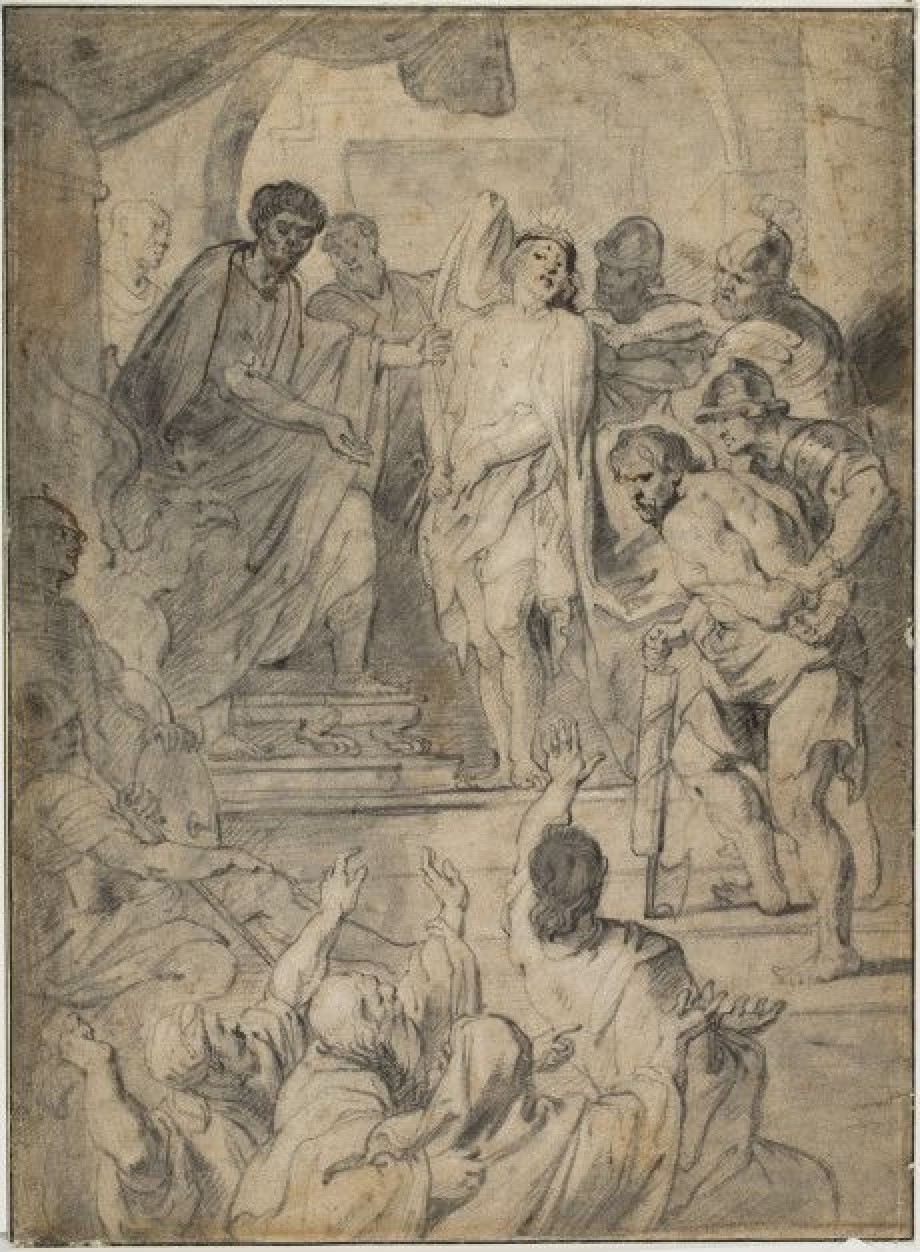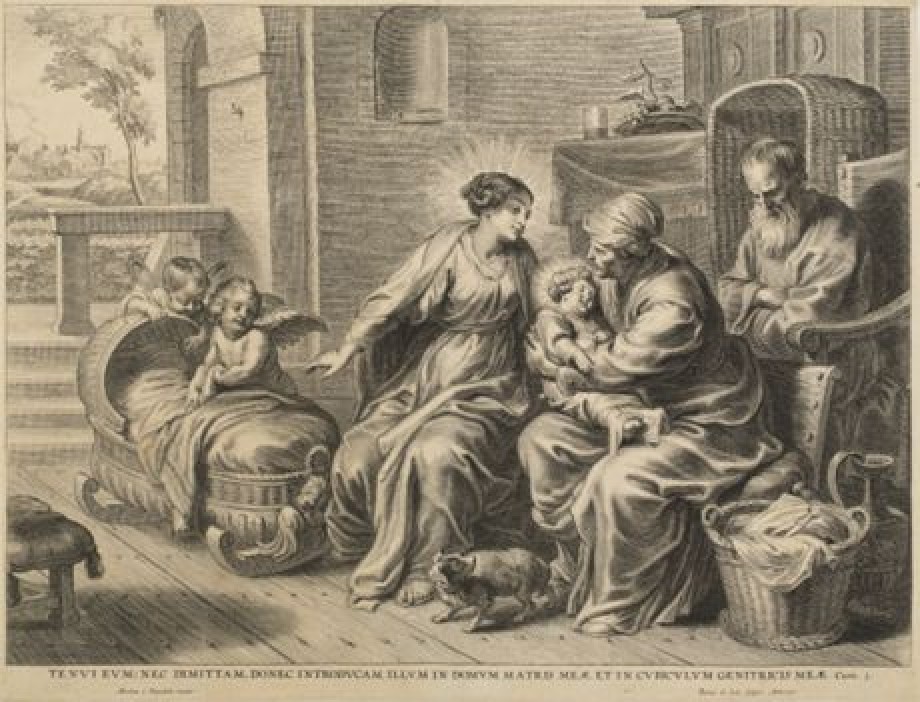
Abraham van Diepenbeeck
More about Abraham van Diepenbeeck
Abraham van Diepenbeeck is the son of a glass painter, a trade that van Diepenbeeck learns from his father. Van Diepenbeeck primarily designs glass windows, prints for books and tapestries. He designs glass windows for a number of Antwerp churches and cloisters. Van Diepenbeeck's productivity is known for his many design drawings and oil sketches. Prints that the artist designs are published by important printers such as Van Meurs and Plantin-Moretus. One of the highlights with regards to his designs of prints is the series for Temple des muses in the late 1630's.
Van Diepenbeeck is eclectic and uses motifs and stylistic elements from other artists in his works. Before 1640, the artist is in direct contact with the studio of Peter Paul Rubens (1577-1640), an influence that clearly shows in his work. Rubens appeals to the artist to interpret some of his ideas into prints or to make copies of the work of other artists, such as Francesco Primaticcio (1504-1570) and Nicolò dell'Abate (ca. 1509-1571) in Paris and Fontainebleau. It is supposed that van Diepenbeeck also had hand helping with painting series by Rubens.
In the 1630's van Diepenbeeck ventures into monumental painting work to a limited degree. After 1640, the influence of Anthony van Dyck (1599-1641) can be noted in the expressive postures and facial expressions.
9 May 1596
Abraham van Diepenbeeck is born in ‘s-Hertogenbosch.
1622-1623
Van Diepenbeeck is taken in as Master glass painter in the Saint Luke guild of Antwerp.
1626-1627
There are strong suspicions that van Diepenbeeck, along with the studio of Rubens, helps on the poster boards of the tapestry series, The Adoration of the Eucharist.
1627
Van Diepenbeeck follows the instructions of Rubens to make a design drawing for the Vitae Patrum of Heribertus Rosweyde (published by Plantin-Moretus).
Circa 1632
Rubens asks Abraham van Diepenbeeck to make drawings after frescoes by Francesco Primaticcio (1504-157) and Nicolò dell'Abate (ca. 1509-1571) in Paris and Fontainebleau.
4 January 1636
The artist is registered as a burgher of the City of Antwerp.
1636
Van Diepenbeeck makes a design drawing for the print of Neptune and Minerva, basing it on material by Rubens.
June 1637
Catharina Heuvick and Abraham van Diepenbeeck are married. The couple has eight children.
1638
Van Diepenbeeck obtains the status of Free Mastership in the Antwerp Saint Luke guild.
Circa 1640-1650
Van Diepenbeeck paints The Blessed Waltman crowned as abbot of St. Michiels in Antwerp (Saint Fredegandus Church, Deurne).
1641
The artist becomes dean of the Antwerp Saint Luke guild.
1648
In this year, van Diepenbeeck receives the commission to make sketches for a series of monumental paintings on the life of Psyche. The series is carried about by other painters from Antwerp for the Honselaarsdijk Palace (Holland) of the Stadtholder Prince Frederik Hendrik of Orange (1584-1647). (At the beginning of the 19th Century, much of the palace is destroyed. The paintings have not survived).
13 May 1652
After the death of his first wife, van Diepenbeeck marries Anne van der Dort, with whom he has four children.
After 1660
In the last half of his life, the artist busies himself nearly exclusively with designs for books and tapestries.
31 December 1675
Abraham van Diepenbeeck dies in Antwerp.
Text: Matthias Depoorter







